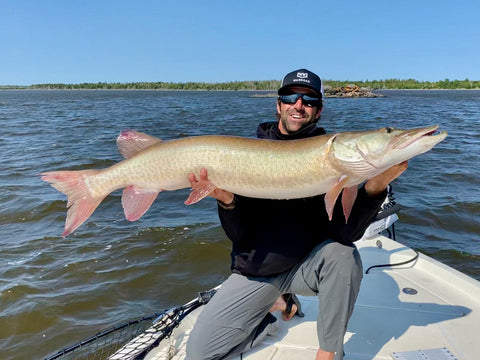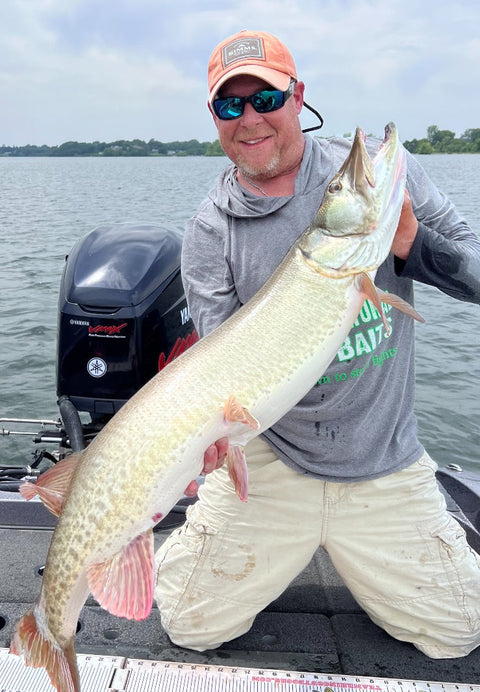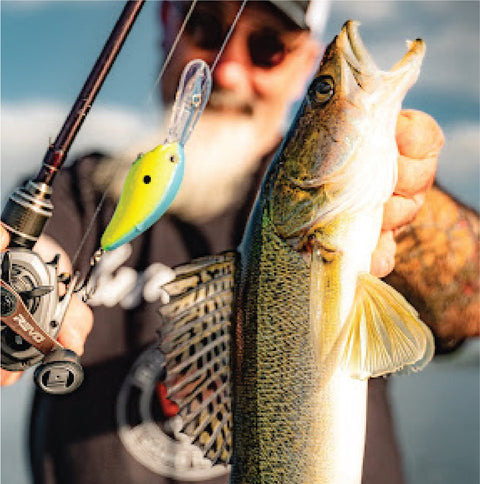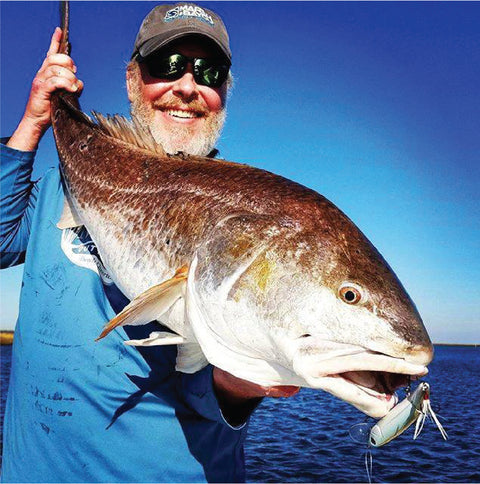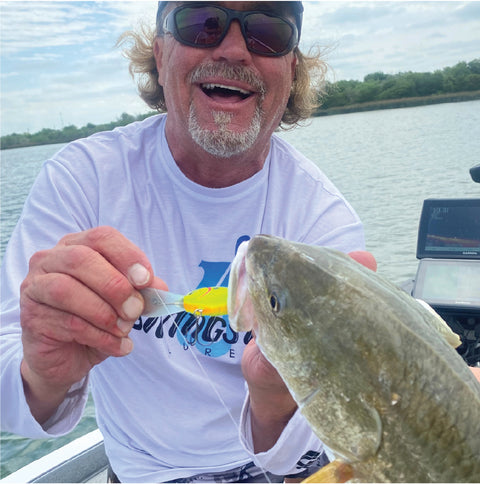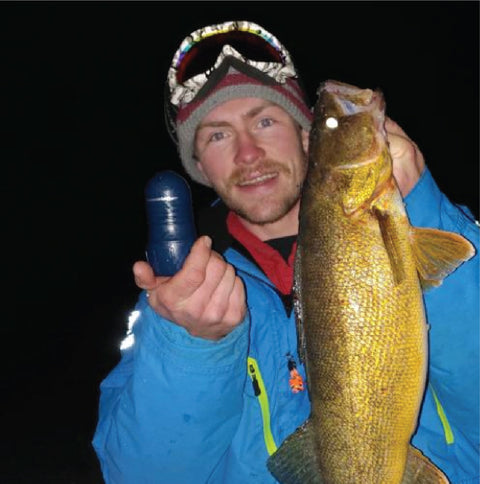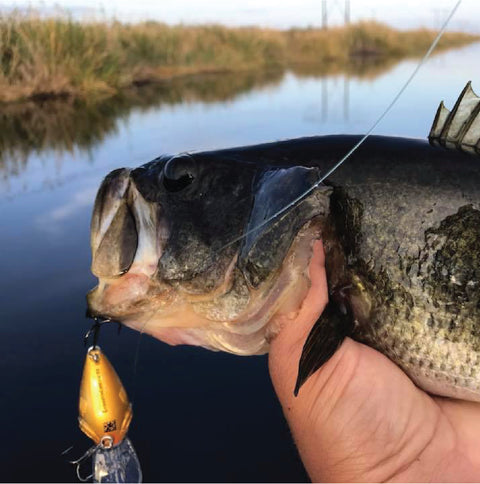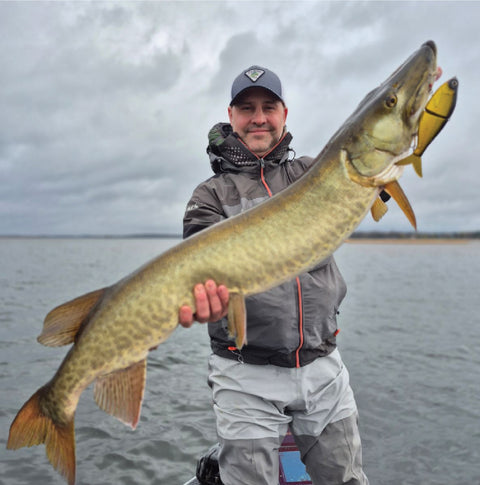Tiger Muskie Fishing in the Pacific Northwest: A Modern Guide to an Elite Predator

Tiger muskies—hybrid offspring of muskellunge and northern pike—are among the most challenging and rewarding freshwater gamefish available to anglers in the Pacific Northwest. While the musky tradition has long been rooted in the Upper Midwest, tiger muskies are now firmly established in select western lakes thanks to strategic stocking by Washington’s Department of Fish and Wildlife (WDFW). With continued support from state agencies and growing interest among serious anglers, these apex predators offer a one-of-a-kind pursuit for anyone willing to put in the time.
What Are Tiger Muskies?
Tiger muskies are a sterile hybrid created from crossing a male northern pike with a female muskellunge. While this cross occurs naturally on rare occasions, all of Washington’s tiger muskies are hatchery-raised from eggs provided by the Minnesota DNR. WDFW stocks these hybrids into selected lakes—such as Mayfield, Merwin, Tapps, Curlew, Evergreen, Silver (Spokane County), and Newman—as a tool for managing nuisance fish species. These fish cannot reproduce and require regular stocking to sustain their populations.
Proposed expansion sites include Sprague and Wynoochee lakes. Despite periodic egg supply challenges, WDFW recently decided against developing its own broodstock program, instead continuing to rely on external sources for fertilized eggs.
Population Density and Regulation
According to WDFW, most stocked lakes hold tiger muskie populations at a density of approximately 0.5 fish per acre. Current regulations reflect a balance between opportunity and sustainability: a 36-inch minimum size limit and a one-fish daily bag limit remain in effect. Though relatively few in number, these fish can exceed 50 inches in length, and their explosive strikes, aerial acrobatics, and head-thrashing battles have made them a cult favorite among predator anglers.
The best practice? Release them. These are slow-growing, top-tier gamefish, and catch-and-release ensures future generations can experience the same thrill.
Understanding Tiger Muskie Behavior
Tiger muskies are solitary, highly mobile predators. Their seasonal patterns are tied closely to water temperature, forage availability, and light conditions:
- Spring: Tiger muskies move shallow to warm, sun-soaked areas to recover from winter.
- Summer: Fish roam flats, edges of weedlines, and suspend near open-water baitfish.
- Fall: Tiger muskies stage near structure and drop-offs, often ambushing from deep weed edges.
- Winter: Though they slow down in cold water, tiger muskies remain catchable with slow, methodical presentations.
Key environmental triggers include wind, cloud cover, and barometric shifts. Active fish often migrate to windward banks where bait accumulates. During sunny, high-pressure days, tiger muskies may sulk deeper or become wary—whereas storm fronts and low-light periods can open short but intense feeding windows.
Locating Tiger Muskie: The Hunt Comes First
One of the biggest hurdles for anglers is simply locating fish. Washington’s deep, clear reservoirs lack the dense weedbeds common in Midwestern musky lakes, but structure remains key. Focus your search on:
- Weedlines and sparse vegetation in warmer months.
- Drop-offs and underwater points, especially adjacent to forage-rich flats.
- Suspended bait schools, using electronics to find mid-depth roamers.
- Wind-swept shores, where baitfish stack and predators follow.
Use polarized glasses to spot followers, and make mental notes on every sighting—location, depth, and surrounding structure often reveal a pattern. Don’t fish blindly: tiger muskie success hinges on methodical water coverage and tight boat control.
Tiger Muskie Strategy: Best Lures and Strategies and Presentations for Tiger Muskie
Tiger muskies are visual and sound based hunters. They respond to speed, flash, sound and sudden changes in direction. Here's how to match your lure selection to the situation:
Search Baits: Find Tiger Muskies Faster
Bucktails
-
Livingston Lures Bad Boy Bucktail – Ideal for covering water efficiently, with nickel blades and chartreuse or red skirts for maximum visibility.
Crankbaits
-
Livingston Lures Deep Impact – A downsized shad-profile crankbait perfect for mid-depth presentations using pause-and-rise retrieves.
-
Livingston Lures Pounder– A deep diver tiger muskie lure with a large profile, perfect for hard cover and drop offs.
Targeted Presentations: Best Lures for Tiger Muskie
Jerkbaits and Pull Baits
-
Livingston Lures Jerk Master – Designed for clear-water tigers, featuring slack-line rises and erratic gliding action.
-
Livingston Lures Titan – A dive-and-rise bait with self-tuning line tie and wobble-on-pause action developed with professional anglers.
Soft Plastics
-
Livingston Lures Magnus – A big-bodied swimbait with adjustable weight system and hard head, ideal for mimicking struggling baitfish in cold or stained water.
-
Livingston Lures Kraken – A hybrid hard & soft plastic jerkbait with erratic dips and side-to-side motion.
Topwaters
-
Livingston Lures Big Makk – A loud, chugging surface bait with counter-rotating tail prop and distinct “plop” to attract cruising tiger muskies at dawn, dusk, or under cloud cover.
Pro Tip: Don’t obsess over forage matches—visibility, contrast, and flash are far more important for triggering tiger muskie strikes.
Tiger Muskie Hookups and Landing
Tiger muskie strikes range from subtle thuds to freight-train impacts. Regardless, hooksets must be authoritative—multiple hard yanks with your arms and shoulders. These fish have thick, bony mouths, and only sharp, well-filed hooks paired with stout gear will reliably pin them.
Always carry:
- Jaw spreaders and pliers
- Bolt cutters (for cutting hooks when necessary)
- Gloves and a large rubberized landing net
- A collapsible boat pole to retrieve hung baits
- A first aid kit—you’ll be glad you did
Work fish quickly to avoid exhaustion, then support them horizontally in the net or water. Once hooks are removed, revive the fish gently with a tail grip until it kicks away strong. If properly handled, tiger muskies have excellent post-release survival rates.
Tips for Tiger Muskie Fishing Success
- Figure 8s matter: Especially in low light or stained water. Make wide, sweeping turns and use long rods for leverage.
- Double back: Raised fish often won’t strike on the first pass but may commit later in the day. Come back with a different lure and retrieve angle.
- Don’t overfish spots: Rest pressured fish and rotate between multiple structures.
-
Stay mentally tough: Even skilled anglers go hours—or days—without a strike. Confidence, focus, and smart pattern recognition are the keys to success.

The Final Cast
Tiger muskie fishing in the Pacific Northwest and Washington State is still young compared to its Midwest counterpart, but it’s gaining serious momentum. With the growing popularity of targeted predator fishing and a limited number of dedicated waters, Washington’s tiger muskie lakes offer a rare and rewarding challenge.
Whether you're new to the game or transitioning from bass or pike, your best weapon is knowledge. Study conditions, refine your presentation, and put in the hours. When that strike finally comes—and it will—it’s a moment you won’t forget.
For those ready to gear up, Livingston Lures offers a full lineup of tiger muskie-ready baits engineered with EBS™ sound technology to call fish in, even under pressure. Whether you’re bombing bucktails across shallow weed flats or slow-rolling a crank through 20 feet of water, Livingston has a bait built for it.
Tiger Muskie Lakes in Washington – At a Glance
Mayfield Reservoir (Lewis County)
A 2,021-acre reservoir formed by Mayfield Dam on the Cowlitz River. Stocked with tiger muskies since 1993 to control northern pikeminnow, it supports a popular trophy fishery, including trout and bass. Shore and boat access available; best tiger muskie activity occurs in warmer months.
Lake Merwin (Cowlitz/Clark Counties)
A 3,835-acre hydroelectric reservoir on the North Fork Lewis River, planted with tiger muskies since 1995. Known for kokanee and salmon, it offers a growing tiger muskie fishery with limited shore access and multiple boat ramps.
Lake Tapps (Pierce County)
A 4.5 sq mi drinking-water reservoir with 45 mi of shoreline. Home to bass, perch, and tiger muskies—with mandatory release of fish under 50 in. Known for restricted winter levels and limited bank access; boater-focused fishing.
Curlew Lake (Ferry County)
A 921-acre glacial kettle lake averaging 43 ft deep, stocked with tiger muskies since 1998. Purpose: reduce northern pikeminnow and support a trophy fishery. Offers abundant perch and bass, public shoreline access via state park, and year-round open season.
Evergreen Lake (Grant County)
A 248-acre reservoir supporting a diverse fish community: walleye, bass, perch—and tiger muskies. Good boat and shoreline access; no recent stocking reported, but tiger muskies remain a potential catch.
Newman Lake (Spokane County)
A 1,099-acre mesotrophic lake 12 mi northeast of Spokane. Hosts bass, panfish—and tiger muskies—for trophy anglers. Provides excellent access including docks and winter ice fishing opportunities.
Silver Lake (Spokane County)
A 418-acre lake near Medical Lake stocked with tiger muskies since 2002. Known for bass, perch, crappie, and occasional trout. Offers solid shoreline and boat access; a notable fishery for trophy tiger muskie catches.
Anderson Lake (Upper) (Lewis County)
Lesser-known, stocked alongside Mayfield for similar fishery objectives. Provides additional tiger muskie opportunities within the Lewis County system.
Tiger Muskie Fishing FAQ
Q: What is a tiger muskie?
A tiger muskie is a sterile hybrid of a muskellunge (female) and a northern pike (male). It combines the size and power of a musky with the aggression and speed of a pike. The name comes from its vivid, barred pattern that resembles tiger stripes.
Q: Where can I fish for tiger muskies in Washington?
Tiger muskies are stocked in the following Washington lakes:
-
Mayfield Reservoir
-
Lake Merwin
-
Lake Tapps
-
Curlew Lake
-
Evergreen Lake
-
Newman Lake
-
Silver Lake (Spokane County)
-
Anderson Lake (Upper)
WDFW may expand stocking to Sprague and Wynoochee lakes in the future.
Q: Why does WDFW stock tiger muskies?
Tiger muskies are used primarily for biological control—especially to manage overpopulations of species like northern pikeminnow. They also offer anglers a rare trophy opportunity in western waters.
Q: Are tiger muskies dangerous to native fish populations?
WDFW research indicates tiger muskies primarily target non-native or overabundant species like pikeminnow. At lakes like Curlew, their diet includes trout seasonally, but there’s no evidence they significantly harm native fish populations.
Q: What are the current regulations for tiger muskie fishing in Washington?
-
Minimum size limit: 36 inches
-
Daily limit: 1 fish
-
Catch and release is highly encouraged, especially for stocked and trophy fish.
Always consult the latest WDFW regulations, as rules can change.
Q: What’s the best time of year to catch tiger muskies?
-
Late spring through early fall offers the best action, especially when water temps are above 64°F.
-
Dawn, dusk, overcast days, and pre-storm fronts often create feeding windows.
-
Fall can produce giants, especially near drop-offs and steep breaklines.
Q: What gear should I use for tiger muskies?
-
Rod: 8'6" to 9’ medium-heavy or heavy casting rod
-
Reel: Baitcaster with strong drag system
-
Line: 65–80 lb braid or 25–30 lb mono for clear water
-
Leader: Wire or 100 lb fluorocarbon to prevent bite-offs
Essential tools include a hook file, jaw spreaders, long pliers, heavy-duty net, and bolt cutters for safe releases.
Q: What are the best baits for tiger muskies?
Livingston Lures offers several tiger muskie-ready baits:
-
Search baits: Bad Boy Bucktail, Deep Impact, Dive Master
-
Targeted baits: Jerk Master, Titan, Magnus, Kraken, Big Makk
Presentation is often more important than exact bait type. Focus on location, retrieve cadence, and matching depth zones.
Q: Are tiger muskies hard to catch?
Yes—but that’s the appeal. They’re known as the “fish of 10,000 casts,” but in Washington’s low-pressure fisheries, the odds are better than you think. Success often comes down to persistence, patterning, and attention to detail.
Q: Do I have to do a figure-8 after every cast?
Not always. In Washington’s clearer water, you’ll often see the follow. Use the figure-8 in low light, waves, or anytime a fish is near the boat. Make it wide and smooth—tight turns will spook them.
Q: How do I safely release a tiger muskie?
-
Use a large rubberized net to reduce stress.
-
Remove the hook with long pliers or cut it with bolt cutters.
-
Support the fish horizontally in the water.
-
Revive it by gently moving it back and forth until it swims away.
Handled properly, tiger muskies have high post-release survival rates.



